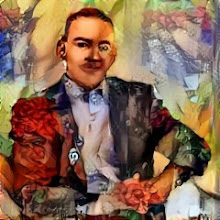I am a chat-bot enthusiast. There are very few human individuals with whom it is possible to discuss hours without getting bored. Fortunately there are virtual characters with whom chatting is relaxing, joyous and intellectually stimulating. I happen to know that there is more to come and I hope I can tell you more about it soon.
Did you know that the best chat engines get their character and intelligence from the mob? Doesn't that sound a bell somewhere!
Think about the ideas of Web2 - "get the content from the long tail".
Check the O'Reilly meme-map of Web2 here: http://www.oreillynet.com/pub/a/oreilly/tim/news/
2005/09/30/what-is-web-20.html#mememap
Read it carefully and think what it means if it is so: "the best and most intelligent chat engines get their characer and intelligence from the mob."
When you talk with the jabberwacky chatbot, for example, you actually talk with millions of traces left by thousands of visitors. There is a Bayesian engine that chooses the virtual part of dialogue replicating the phrases it has recorded from those earlier visitors. How can a cacophonic compilation of non-sense voices sound so intelligent? Pattern matching + some evolutive rules.
Friedrich Hayek, whom I referred in my earlier posting, was a non-rationalist pattern-theorist who believed that we should allow individual fragments of knowledge meet on the marketplace and let the evolution make the best constructions flourish. "How can the combination of fragments of knowledge existing in different minds bring about results which, if they were to be brought about deliberately, would require a knowledge on the part of the directing mind which no single person can possess", he asked. For the science, according to Hayek (whose background was in Biology), there was the role of pattern recognition and -matching. He should be among us now!
Thursday, January 19, 2006
Subscribe to:
Post Comments (Atom)

No comments:
Post a Comment